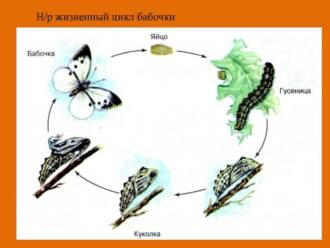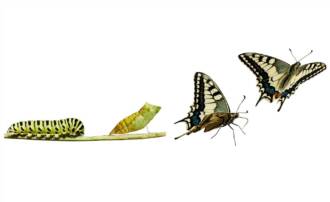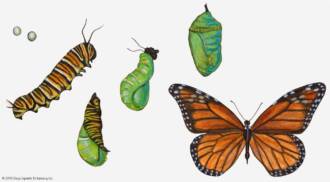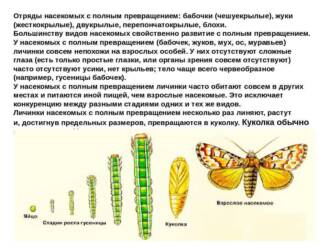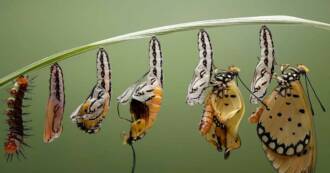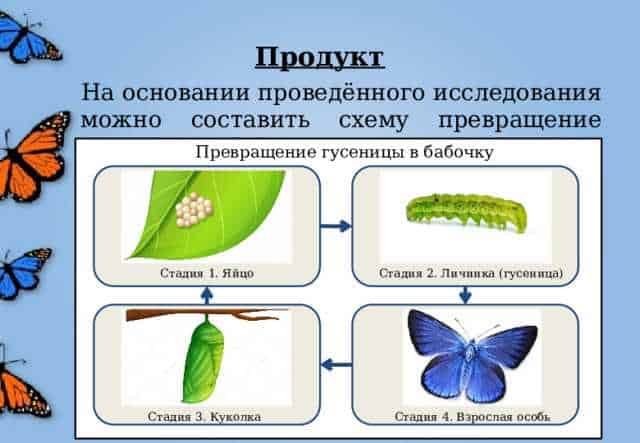
Butterfly is one of the most beautiful and mysterious creatures of nature. But few people know that before this beautiful insect is born, it goes through several amazing stages of transformation. These stages are called metamorphosis and consist of four stages: egg, caterpillar, chrysalis and adult butterfly.
The first stage of a butterfly's transformation is the egg. Butterfly eggs are very small and usually oval in shape. They can come in different colors and sizes depending on the species of butterfly. The egg is usually laid on plants that will serve as food for the caterpillar and is protected from predators by a hard shell.
After the egg hatches, the second stage begins - the caterpillar. The caterpillar is the most active and longest stage of the butterfly's transformation. The caterpillar feeds on plants and grows actively, going through several molts. It also protects itself from predators with a special mechanism: it has bright colors or thorns that scare off enemies.
The third stage is the pupa. When the caterpillar grows and reaches a certain size, it turns into a pupa. A pupa is a special kind of protective shell, inside which the transformation process takes place. Externally, the pupa can be of different sizes and shapes, but it is always motionless and nameless. Amazing changes occur inside the pupa: the caterpillar turns into a butterfly.
Butterfly transformation stages

The transformation of a butterfly goes through several stages, each of which has its own characteristics and characteristics.
Egg

The first stage of butterfly transformation begins with the egg. The egg is covered with a hard shell and contains a butterfly embryo. It may be very small and invisible, but changes are already beginning to take place within it.
Caterpillar
A caterpillar hatches from an egg. The caterpillar has a soft body and many legs. She actively feeds and grows, passing through several molts to change her skin. The caterpillar may eat leaves, flowers, or other food that is needed for its growth.
chrysalis
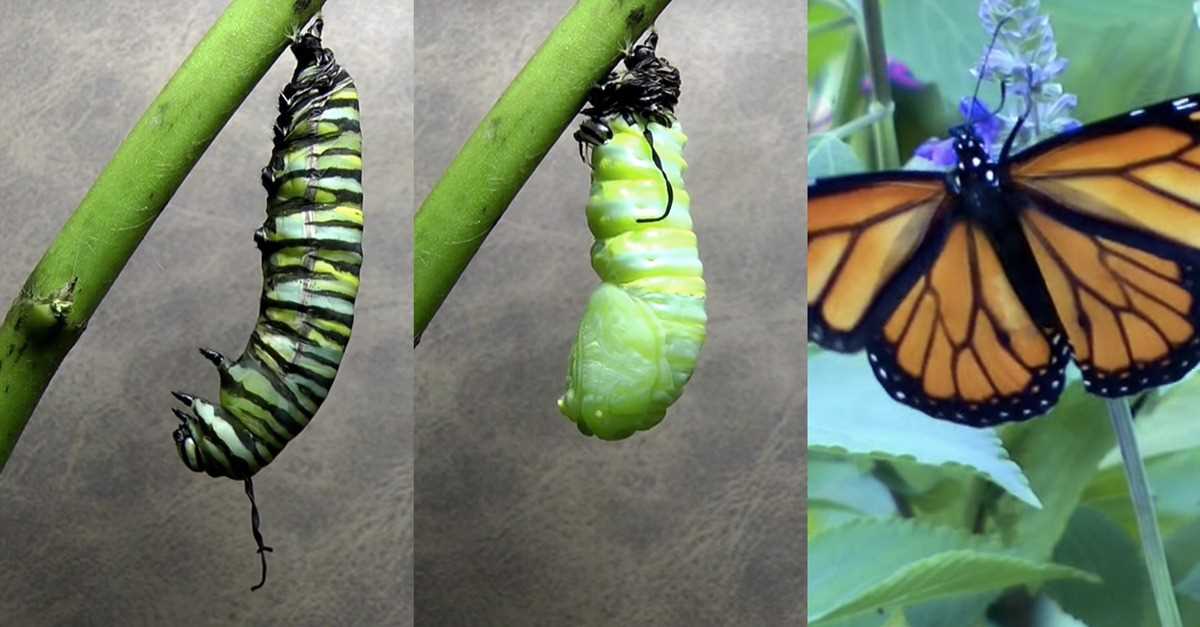
After several molts, the caterpillar turns into a chrysalis. The pupa is formed from the skin of the caterpillar, which hardens and creates a protective shell. Changes occur inside the pupa, and the body of the caterpillar turns into an adult butterfly.
Butterfly
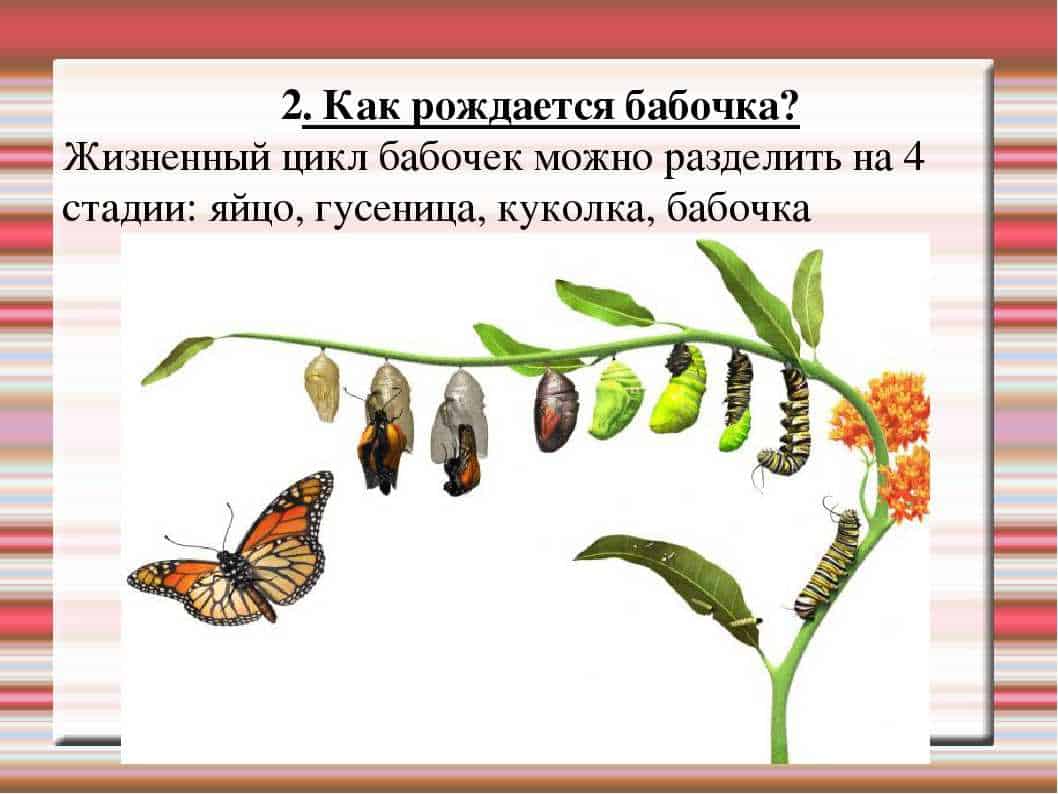
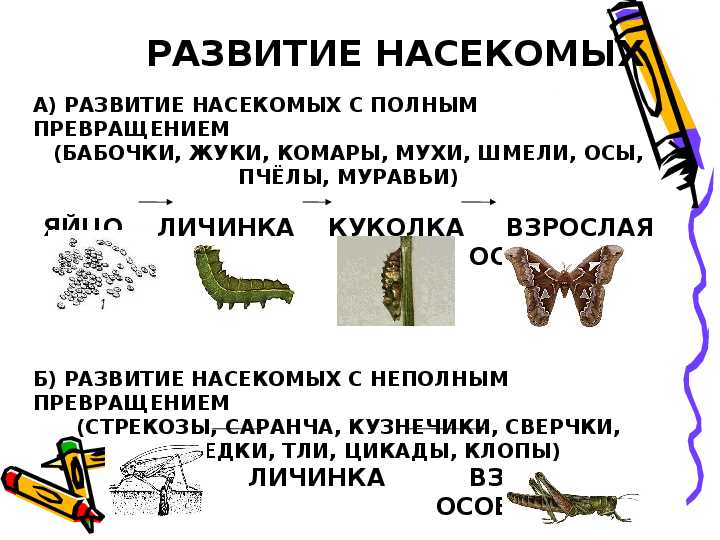
Finally, a butterfly hatches from the chrysalis. She emerges from her protective shell and unfolds her wings. The butterfly is ready to fly and search for food. She becomes a full member of the biological system and begins to live her new life.
Egg: the beginning of the life cycle
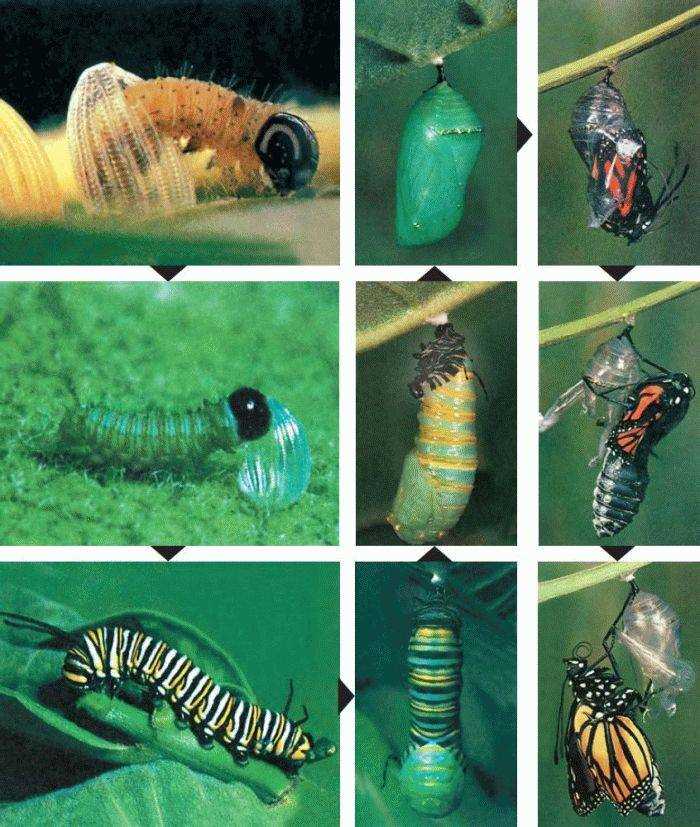
The egg is the first stage of a butterfly's transformation and represents the beginning of its life cycle. At this stage, the butterfly does not look like a butterfly, but rather like a small and transparent egg that attaches itself to a specific surface.
Butterfly eggs can be of various shapes and sizes depending on the species. They can be round, oval or flat. The color of eggs can also vary from white to yellow or green.
When an egg reaches a certain stage of its development, it begins to go through the process of incubation. Inside the egg, the formation of a butterfly embryo begins, which gradually develops and turns into a larva.
Caterpillar: active growth and search for food

The caterpillar is the first stage in the transformation of the butterfly, which occurs after hatching from the egg. At this stage, the caterpillar is in an active growth state and is constantly looking for food.
The caterpillar has developed mandibles that allow it to gnaw and eat the leaves of plants. She actively moves, crawling on the surface of plants or on the ground in search of food.
The caterpillar has special glands that produce a silky fluid from which it weaves its cocoon. This cocoon serves as protection and a place where the caterpillar will turn into a chrysalis.
During its existence, the caterpillar goes through several molts, when it periodically sheds its old skin and grows to adapt to new conditions and find more food.
The caterpillar is the most vulnerable stage of the butterfly's life cycle, as it easily becomes prey for predators. Therefore, the caterpillar tries to be invisible, hiding at the bottom of the leaves or mimicking the environment.
Pupa: transitional stage
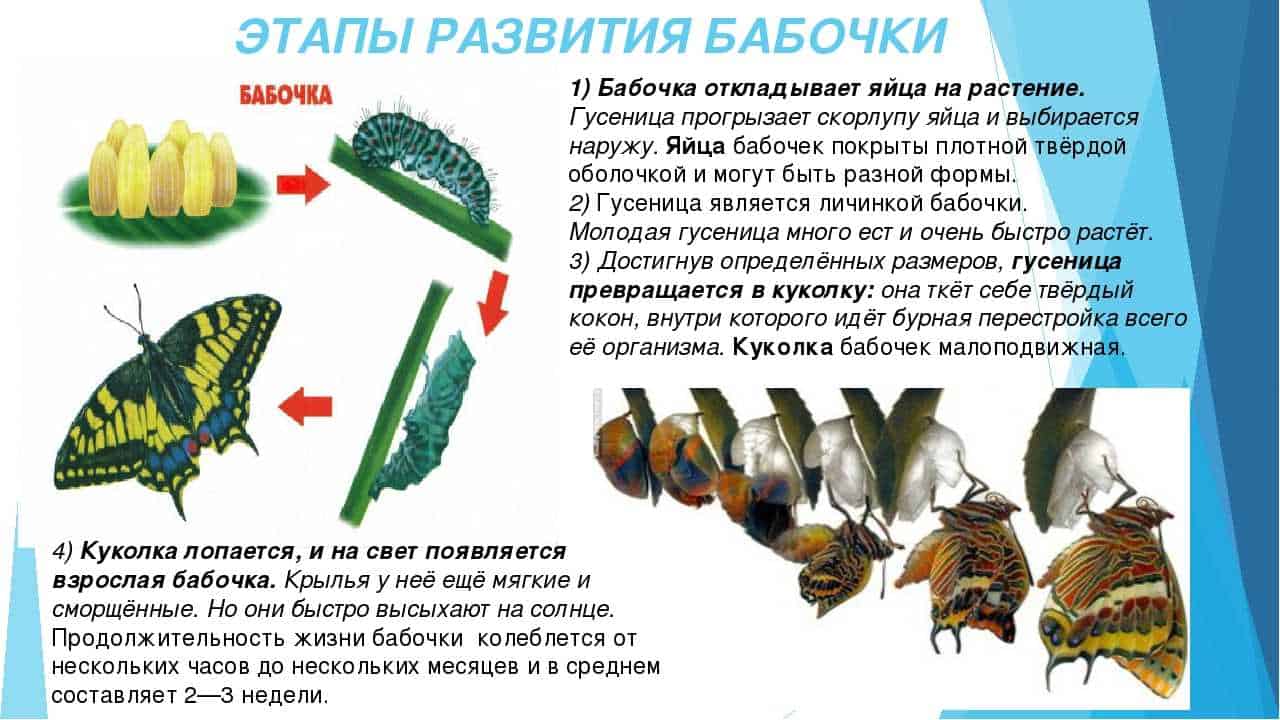
The pupa is one of the stages of butterfly transformation and is the transitional stage between the caterpillar and the adult butterfly. During this stage, the caterpillar turns into a chrysalis, in which complex and amazing processes take place.
Pupation
The pupa is formed from the last skin of the caterpillar, which is called refraction. After refraction, the caterpillar begins the process of transformation inside its body. It creates a protective shell called scales that helps it keep its shape and protects it from the outside environment.
The transformation process
Metamorphosis takes place inside the pupa. The caterpillar body decomposes, and new organs and tissues of the butterfly are formed from it. A complete transformation takes place: lips turn into a proboscis, legs turn into wings, and caterpillar eyes are replaced with butterfly eyes.
rest period
The pupa is dormant for several days, weeks or even months, depending on the type of butterfly. At this time, important developmental processes take place, and the pupa is completely dependent on the external environment. She doesn't eat or move.
Exit from the chrysalis
After the transformation process is completed, the butterfly is ready to leave the chrysalis. She first makes a small hole in the shell and then sticks her body out. In doing so, the chrysalis can use its wings to help itself escape. After emerging from the chrysalis, the butterfly spreads its wings and is ready for its new adult life cycle.
Beautiful Transformation: Butterfly Metamorphosis

Egg
The butterfly metamorphosis stage begins with an egg that the female lays on a specific plant. The egg is small and usually round in shape. A caterpillar develops from the egg, which will become the next stage of transformation.
Caterpillar
The caterpillar is the second stage of the butterfly's metamorphosis. She hatches from an egg and begins to actively feed on vegetation. The caterpillar has a long body and numerous legs that help it move on the surface. During this stage, the caterpillar goes through several molts, increasing its size. She also creates a protective silk cocoon in which the next stage of transformation takes place.
chrysalis
Pupa is the third stage of butterfly metamorphosis. The caterpillar closes in its cocoon and turns into a motionless chrysalis. Inside the pupa, complex changes occur, as a result of which the caterpillar turns into a butterfly. This process can take from several days to several months, depending on the type of butterfly.
Butterfly
The last stage of metamorphosis is the appearance of the butterfly itself. When the process of transformation inside the chrysalis is completed, the butterfly breaks its shell and flies to freedom. Initially, her wings may be weak and wrinkled, but they quickly flatten out and become ready to fly. The butterfly begins to look for a partner to reproduce and continue its life cycle.
Departure from the chrysalis: first flight
Emergence from the chrysalis is the final stage of the butterfly's transformation and is the most exciting moment in its life. After the butterfly has spent several weeks in the chrysalis, it is time for its release and first flight.
When the butterfly is ready to take off, it begins to move and bend, destroying its chrysalis. She then slowly sticks out the front of her body and begins to turn around. This process may take several minutes, but in the end the butterfly is released from the chrysalis.
The butterfly's first flight after emerging from the chrysalis is a key moment in its life. It unfolds its wings to check that they are ready for flight. Then the butterfly begins to move slowly and rises smoothly into the air.
The butterfly's first flight can be a bit hesitant as it is just getting used to its new body and wings. However, with every maneuver and movement, she becomes more confident and skillful in flight.
Emergence from the chrysalis and the first flight are moments of great transformation for the butterfly. It goes from a motionless chrysalis to a beautiful and graceful creature, capable of flying on the breeze and exploring the world around it.
Adult butterfly: a new stage of life

After passing through all the stages of transformation, the butterfly reaches an adult state. This stage of life lasts much longer than the rest, and is the most spectacular and attractive. The adult butterfly has completely changed and is ready to perform its new functions.
One of the main features of an adult butterfly is its wings. They become fully developed and take on bright and colorful patterns. Wings allow the butterfly to fly and travel considerable distances in search of food and a breeding partner.
The adult butterfly also has a long and flexible proboscis that is used for feeding. The butterfly feeds on the nectar of flowers, sticking to them with the help of its proboscis. She may also drink fruit juices and other sugary liquids.
An adult butterfly plays an important role in the process of pollination of plants. During the search for food, the butterfly accidentally applies pollen from one flower to another, contributing to their pollination and reproduction. This makes the butterfly a valuable member of the ecosystem and helps maintain biodiversity in nature.
The adult butterfly also plays an important role in the reproduction of its species. She is looking for a partner with whom she mates to produce offspring. After mating, the female lays her eggs on suitable plants to give rise to a new generation of butterflies.
Reproduction and continuation of the life cycle
Reproduction plays an important role in the life cycle of butterflies and allows them to continue their lineage. After the completion of the transformation process and exit from the chrysalis, the butterfly is ready for reproduction.
Female butterflies have a special organ for laying eggs - an ovipositor. They choose a suitable place for laying eggs that will provide good conditions for the development of larvae. These can be plant leaves or other suitable surfaces.
After laying their eggs, the female butterflies die. The eggs hatch into larvae, which begin their own developmental path. The larvae actively feed and grow through several stages called instars.
After completion of growth and reaching a certain size, the larva turns into a pupa. Complex transformations take place inside the pupa, as a result of which an adult butterfly is formed. The transformation process can take several weeks or even months, depending on the type of butterfly.
When the butterfly is fully formed inside the chrysalis, it comes out. This happens by tearing the doll case or opening a special slot. The new butterfly remains slightly weakened and wet, but soon its wings dry up and become ready for flight.
After emerging from the chrysalis, the butterfly is ready to breed. She is actively looking for a mating partner. After a successful mating, the female butterfly lays her eggs again, completing her life cycle.


